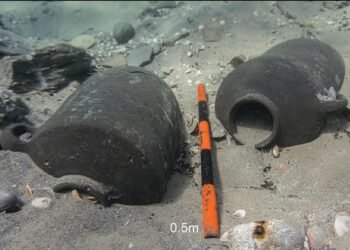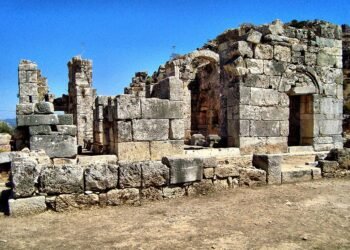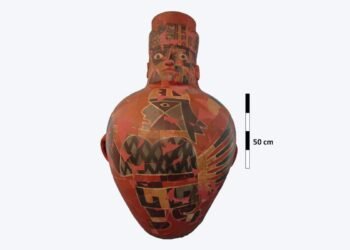Excavations at Historic St. Mary’s City, a 17th-century colonial fort in Maryland, have unveiled a rare piece of body armor. The discovery, made late last year, emerged from a broader archaeological project initiated in 2021.

The artifact, initially appearing as a nondescript scrap of iron, gradually revealed itself to be a tasset, a component of a suit of armor designed to safeguard the wearer’s thighs during battle. An X-ray examination illuminated the intricate details of the armor, showcasing the steel bands and decorative rivets, including three hearts, characteristic of the period.
The find offers insights into the adaptation strategies of the early colonists to the challenges posed by the environment. In Maryland’s hot and humid climate, the heavy and cumbersome tassets were likely deemed impractical, leading the settlers to discard them while retaining other essential armor components such as breastplates.
Travis Parno, the director of research and collections at Historic St. Mary’s City, emphasized this aspect, stating, “They’re heavy. It’s a hot, humid environment. So you get rid of the tassets … You keep your breastplate, though, because that’s protecting your core.”

Previous excavations have uncovered diverse artifacts, including 17th-century scissors, a decorative metal braid possibly adorning garments, musket parts, lead shot, glass beads indicative of trade with local Indigenous peoples, and even the skeletal remains of a teenager.
Moreover, the excavation revealed structural outlines of a large building, likely a storehouse, erected shortly after the colonists’ arrival. The absence of a fireplace suggests its function as a non-residential structure, possibly serving military or commercial purposes. This finding aligns with the historical narrative of the settlers establishing essential infrastructure upon their arrival in the New World.
Historic St. Mary’s City holds significant historical importance as Maryland’s first settlement and served as the colony’s capital for six decades before its relocation to Annapolis in 1694. The fort, erected by the first European colonists in 1634, provides a window into the early colonial period.
There are plans to continue excavations at the fort to glean further insights into life during the colony’s initial decade, with a specific emphasis on understanding the interactions between colonizers and the Indigenous peoples of southern Maryland.
More information: Historic St. Mary’s City






















